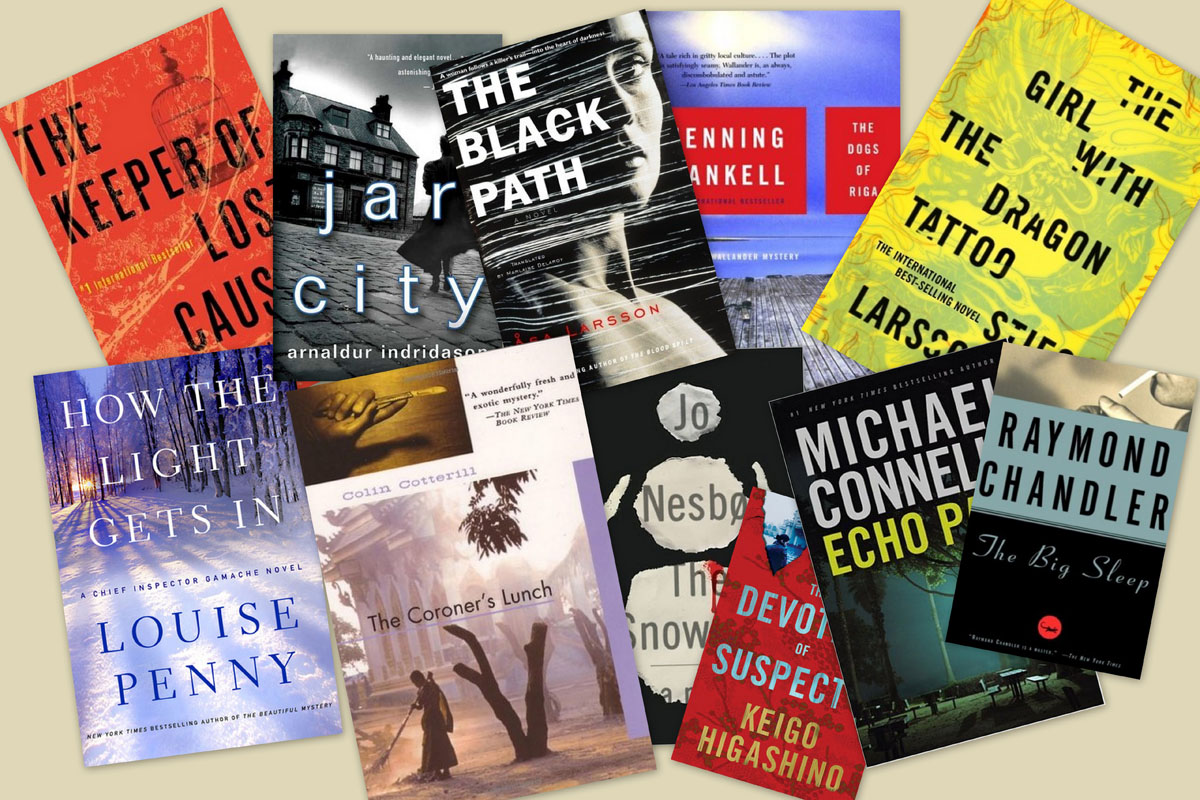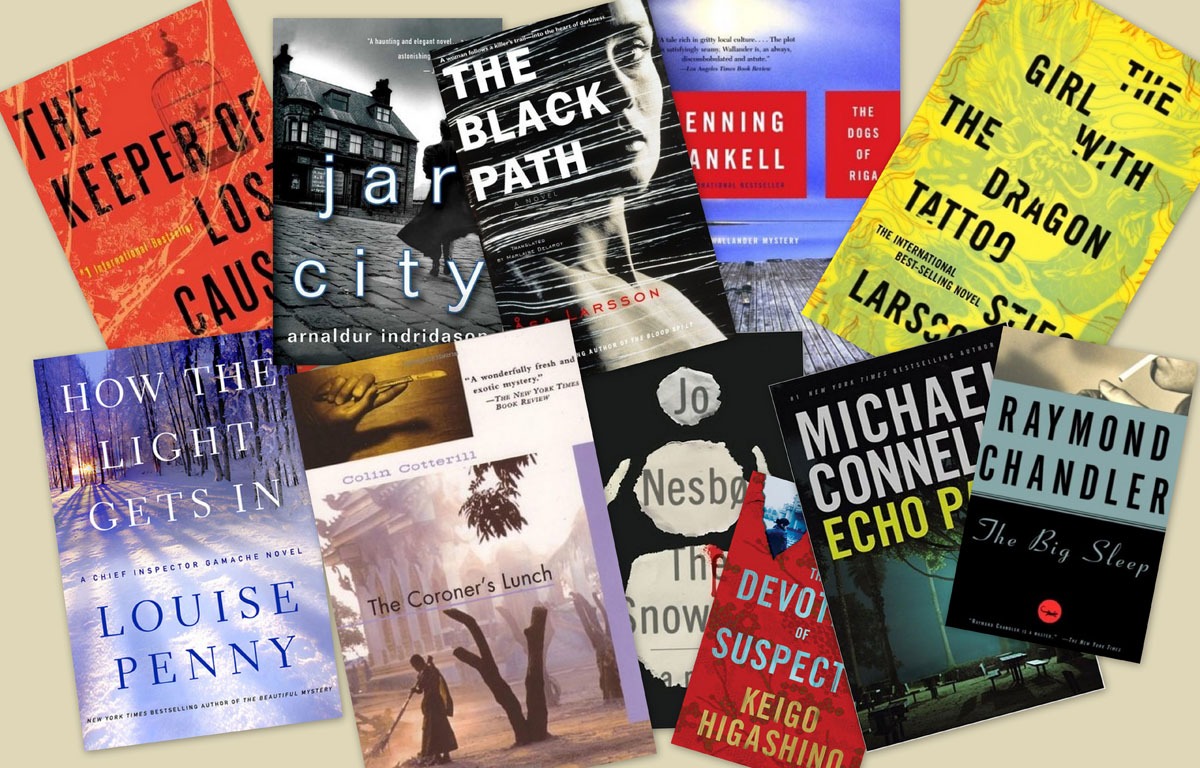Charles Cottle —

Take a look at the New York Times best seller list any given week and you will see that about a third of the books listed are crime mysteries. Americans, at least those who read and buy books, are in love with crime fiction. Readers of the genre will have different preferences. Some like the “cozies” in which the amateur sleuth, while getting in the hair of the authorities, ultimately outwits both the police and the murderer. Others prefer the “police procedural” where solid police work and crime scene investigations trap the clever, but not clever enough, criminal. Then there is the “hard-boiled” type of crime fiction in which the crime itself is described in graphic detail as are the details of the lives of the suspects and the detective or private-eye who solves the murder. I should not fail to mention “noir,” that type of crime fiction in which the spiritually challenged, often depressed, and socially inept detective solves the crime. This latter type, in its “Nordic noir” rendition is especially popular these days.
In an earlier article on this site Mark Richardson introduced us to the Hard-boiled Detectives. In that piece Mark discussed the history of the genre and its major literary figures. In this piece I follow up on Mark’s article by presenting a quick outline of the structure of crime fiction itself.
No matter the type, there can be no denying that large numbers of readers like a well-crafted whodunit. Why is this so? After reading a fair amount of crime fiction in the last few years, I think I have some answers.
Every crime fiction story presents a puzzle to be solved, and it is the puzzle that draws in the reader more than any other element of the yarn. The structure of the story is formulaic. The reader expects it. Early in the novel a murder is committed. The facts of the case are then laid out and a list of suspects is developed. Finally, the sleuth winnows the clues and the murderer is revealed. Often the revelation takes place in the presence of all the main principals of the novel, including the primary suspects. This last feature is especially characteristic of the cozy format.
Before solving the main puzzle presented in the crime fiction novel (namely, figuring out who committed the murder) a number of smaller puzzles must first be solved. Sometimes the identity of the victim is unknown. Often the execution of the crime is complex. Discovering just how the crime was committed is a partial key to solving the crime. The skillful author will make it appear, at least in the beginning, that none of the suspects had the opportunity to commit the murder. Also, motives must be determined. Yet they are often difficult to discover, even though they may be the ordinary ones such as fear, hatred, and revenge. The suspects provide a host of alternative motives for the murder, once their relation to the victim is revealed. Much of the crime novel will deal in the relationships they have with each other and with the victim. In the course of the murder investigation their secrets, and there will be many, are revealed. The reader gets to know all these characters, not directly of course, but as someone who overhears gossip at every turn.
In addition to the puzzle, another reason we like crime fiction is found in the characters of the story. They are interesting. The sleuth or detective in invariably an interesting character, often in subtle ways. He or she is always smart. No one wants to read about a crime solved by a stupid person. Yet, while smart, the detective is usually a complex person with a depth and intelligence that is often underestimated by his or her criminal opponent.
Murderers and their victims are usually interesting characters in the crime fiction novel. The former are often clever and inventive, not at all like the parade of sorry characters whose mug shots appear on the late night news. Victims are also usually interesting people whose relationship to the murderer only becomes obvious as the narrative develops. Generally, we only get to know the victims in retrospect and almost never before their demise.
The cast of suspects is also drawn from those who live interesting, rather than ordinary, lives. In the cozy format, in addition to the usual suspects, at least one or two of the suspects will be truly eccentric characters. It is unlikely that one of these suspects will be the murderer because murder in crime fiction has a rational explanation. That is, murder is rational once we understand the pathological mind that gives rise to it.
The crime fiction writer always allows his or her sleuth to outwit the murderer. But more than that, the good crime fiction writer will also outwit the reader. The skillful writer will present all the clues necessary to solve the crime as the story unfolds. The writer’s task in this game is to keep the reader guessing until the solution is presented. The writer relies on misdirection as the story unfolds. Several false leads will be developed in the story to keep both the sleuth and the reader off-balance. In this unannounced game between the author and reader certain rules must be followed. The most important of these is that no new characters or facts pertinent to the solution of the case can be presented at the very end of the novel, thus making it impossible for the reader to have solved the puzzle in advance of the conclusion. This happens sometimes. But when it does, it leaves the reader feeling cheated.
Crime fiction is quite different from real crime. Unlike real murders, those in crime fiction are always solved. According to FBI statistics approximately 61 percent of murders are cleared from the books in the United States. In Washington, DC, however, less than a third of murders lead to arrest and conviction (Washington Post story). The fictional world is not only tidier than the real world. It is also more just. Murderers are caught and convicted. Justice is served. Readers like this kind of conclusion.
Notwithstanding these reasons for liking crime fiction, the skeptic might question why it is that we like the puzzle presented in crime fiction, but do not find other kinds of puzzles nearly as entertaining. Both the physical and social sciences, for example, present us with a steady stream of complex puzzles. Yet, the sciences are not exactly popular entertainment for the masses. It will be suggested that we are drawn to crime fiction because of our morbid fascination with murder. I grant that such an answer is partially correct. But our morbid fascination with murder is not the only attraction to crime fiction. The formulaic structure of the story, the puzzle, and the skillful presentation by the author are also required. Without them, we are not much interested.


Picking up on your final paragraph, perhaps because it is the ultimate violation against life to commit murder—and try to get away with it—we find it fascinating to vicariously experience circumstances leading to commiting the act and processes of solution to render justice?
LikeLiked by 1 person
An Isolated Incident by Emily Maguire answers a lot of your questions posed here and is simultaneously great crime thriller
LikeLike
I’m sorry i didn’t see your comment earlier. I’ll check out the work you mentioned.
LikeLike